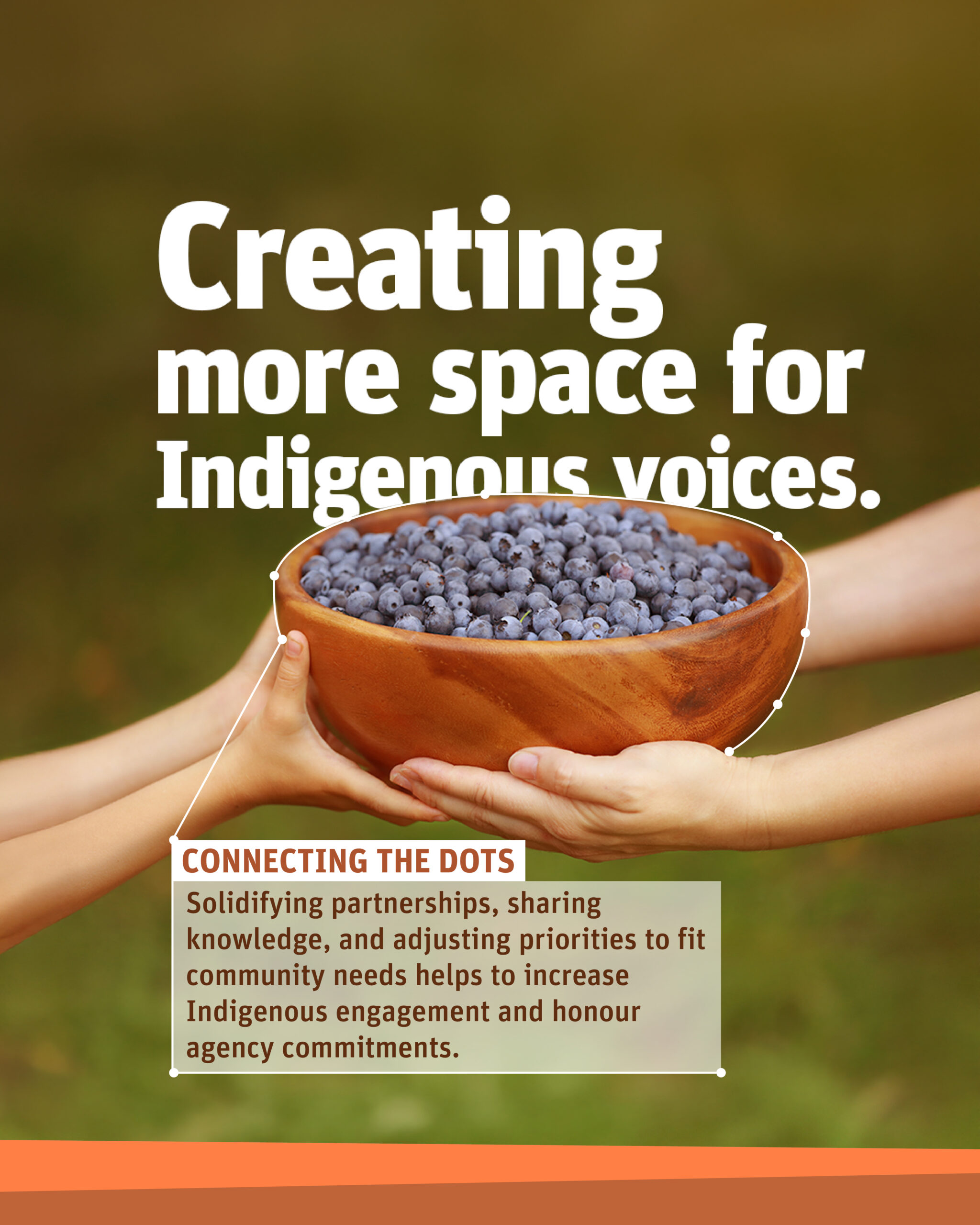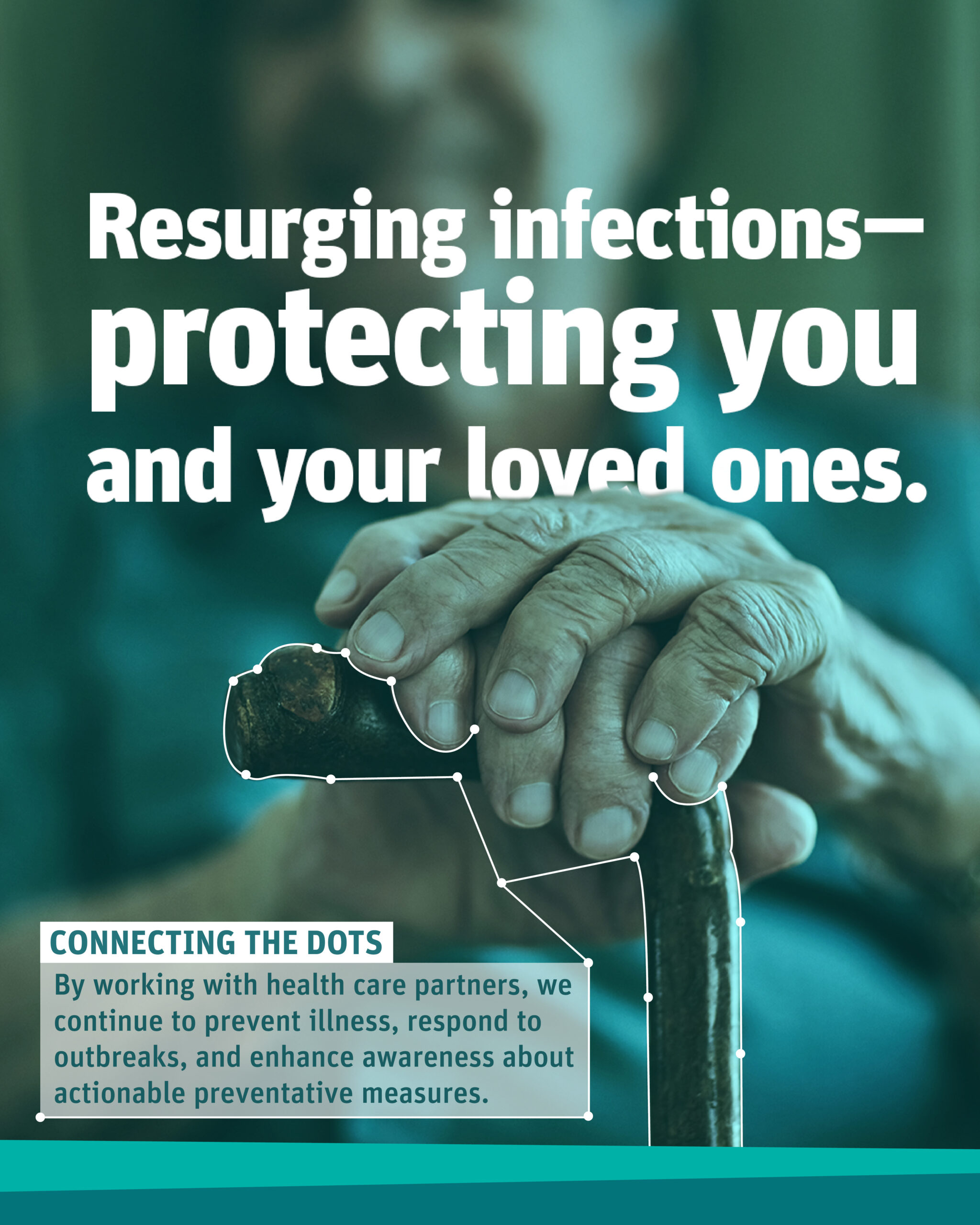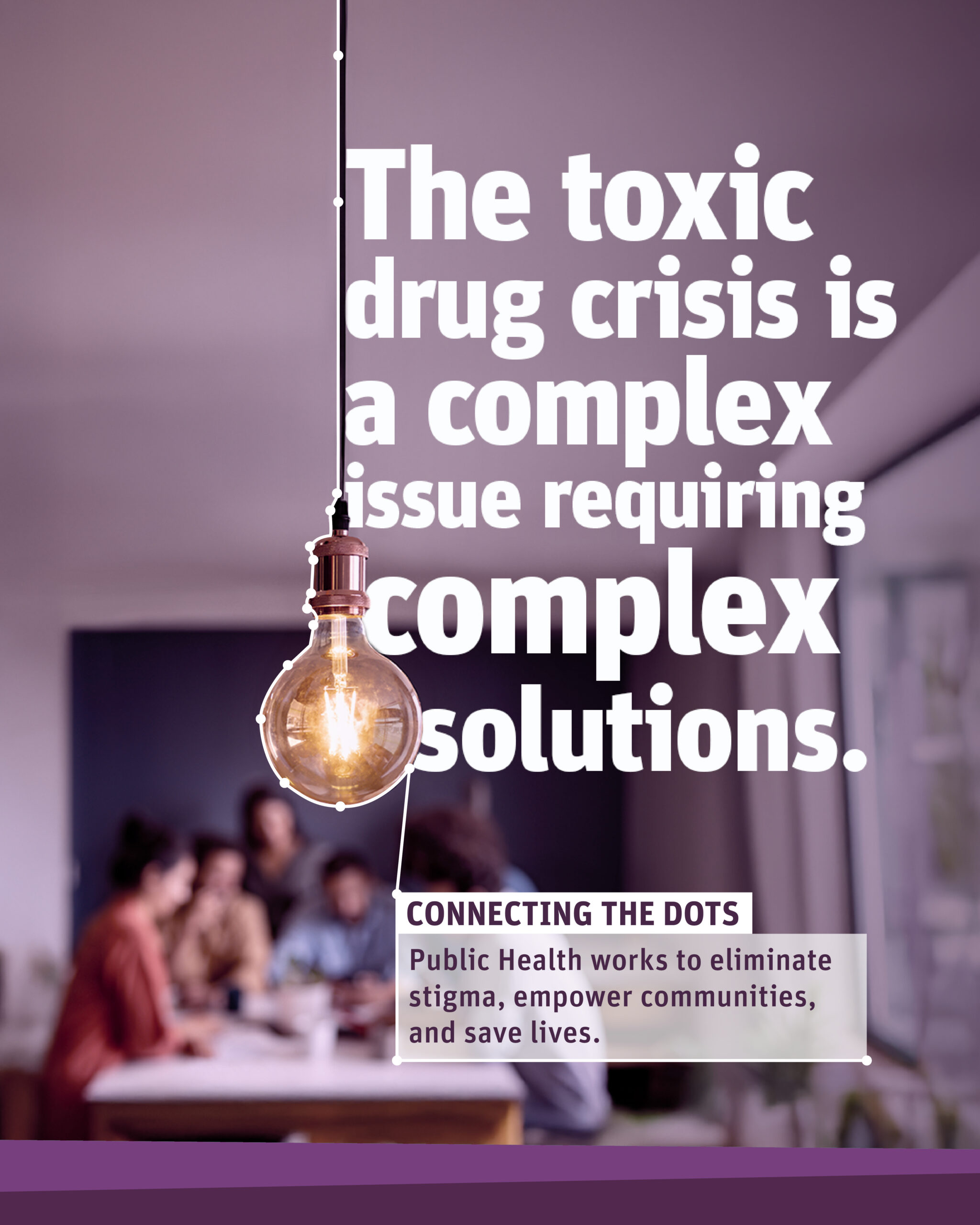2024 Year-in-review: Connecting the dots
Throughout 2024, Public Health maintained its commitment of creating healthier communities for all by collaborating with partners who share our goals and investing in impactful client-oriented programs and services. We continue to address local needs in the pursuit of improving overall well-being, engagement, and access to care.
Below are four examples illustrating how Public Health connected the dots this past year to improve health for individuals, families, and communities throughout the service area.
Creating more space for Indigenous voices
With 14% of the population throughout our service area identifying as Indigenous, effectively engaging with Indigenous individuals, families, and communities is essential to creating healthier communities for all. Strategically investing in staffing and Public Health-wide efforts in 2024 allowed us to increase our capacity to connect and follow the direction set out in our Indigenous Engagement Strategy (originally published in 2018 alongside Indigenous community voices), and reaffirm our approach to supporting self-determined Indigenous health.
For Public Health, this involved
- establishing Indigenous-focused leadership positions at every level of decision making within the agency
- strengthening Indigenous voices and building capacity to align programs and activities within the Indigenous Engagement Strategy
- ensuring that Indigenous voices were highlighted during planning with program teams, actively shaping agency priorities
By focusing on uprooting hidden colonialism within the agency, we also prepared to implement the Unlearning and Undoing White Supremacy and Racism project. The project is adapted by the Office of the Provincial Health Services Authority of British Columbia, and explores racism, white supremacy, and colonization as key factors influencing health outcomes. Taking place over an 18-month period, the project is voluntary for Public Health staff and Board of Health members and officially kicked off in March 2025. Externally, community events such as the inaugural Fall Harvest Feast encouraged relationship building with urban Indigenous Peoples in Greater Sudbury by sharing food and knowledge.
Collaboration that is grounded in humility, knowledge sharing, and adjusting priorities to fit current community needs increases Indigenous engagement and further honours the commitments made in 2018. This work guides us in strengthening public health programs and services for Indigenous communities across the service area.
Resurging infections―protecting you and your loved ones

It can be hard watching family members or friends become sick. Whether you’re impacted directly or are a caregiver, we continue to provide communities with the tools, resources, and programs to prevent illness, where possible, and reduce risks during outbreaks. The number of infections have increased substantially over the past few years.
In 2024, we responded to
- 157 respiratory outbreaks (compared to 26 outbreaks in 2019)
- 39 sporadic whooping cough infections (compared to 7 in the years 2020 to 2023 combined)
- 13 active tuberculosis infections (there were 7 in the previous 8 years combined)
- 138 sporadic cases of syphilis (compared to 39 in 2019).
As part of Public Health’s core mandate, staff worked with partners (such as long-term care homes, hospitals, and health care partners) to prevent and respond to illness and increase the public’s awareness about preventative measures they can adopt. By collaborating across our service area, we ensured that clients—like you and your loved ones—were protected, preventing further outbreaks and severe illness related to diseases such as respiratory viruses and syphilis, as well as other sexually transmitted infections. In addition, investigations of diseases of public health significance involves coordination of testing, treatment, and effective contact tracing while managing potential social factors, language barriers, and possible stigma. This work is in addition to conducting routine inspections or site visits. Educational opportunities were also developed and coordinated for local health care providers, for example, a session regarding managing syphilis in early 2025. Public Health conducted assessments for tuberculosis, providing medication and support to clients and their families throughout their minimum 6 months of treatment, which often includes several weeks of isolation.
While infections currently impact the Sudbury and Manitoulin districts, we know that new infections can appear quickly. Public Health is carefully monitoring outbreaks around the world. Avian influenza was an area of strong focus in 2024, given its potential to cause another pandemic. Meanwhile, measles has been on the rise globally due to declines in vaccination coverage and was another disease of focus in 2024. With these and other infections on the rise, Public Health mitigated risk by conducting risk assessments, completing ongoing surveillance, and offering public education campaigns. Effectively managing these diseases requires Public Health to collaborate with governments and agencies across local, provincial, and federal levels.
Achieving and maintaining high immunization coverage is essential to prevent and control vaccine preventable diseases. Immunization is one of the safest and most effective health interventions to prevent disease, morbidity, and early death. Public Health played a key role in the promotion and prevention of vaccine-preventable diseases. This was demonstrated through the enforcement of the Immunization of School Pupils Act (ISPA). For example, on September 1, 2023, the measles coverage estimates for local students aged 7 to 17 was 90.9%. By July 1, 2024, the coverage increased to 95.9%.
Knowing that a person’s trust in vaccines is shaped by many factors, Public Health was motivated to continue addressing concerns and promoting vaccine effectiveness and safety.
Support healthy smiles at every age!

Good oral health contributes positively to your overall health, including physical, mental, and social well-being—allowing you to speak, eat, and socialize without pain, discomfort, or embarrassment, and reduce your risks of certain chronic diseases.
Tooth decay is one of the most common chronic diseases among children. Untreated tooth decay can
- affect concentration
- impact school performance
- disrupt eating and sleeping patterns
- alter permanent tooth structures
- lead to life threatening conditions
For seniors, poor oral hygiene can lead to bacterial pneumonia, which is a leading cause of death for residents in long-term care settings. Early and regular access to dental care significantly reduces the chance of oral health issues occurring.
In 2024, our Oral Health team screened over 11 000 elementary school children across our service area, identifying 795 children with urgent dental care needs. Public Health followed up with these families, assisted them with applying for financial assistance through the Healthy Smiles Ontario program, and monitored their progress.
In addition, 533 senior clients either received care at our Seniors Dental Care Clinic or were referred to dental providers who participate in the Ontario Seniors Dental Care Program. Having access to oral health care means that clients at this stage of life can lower their chances of suffering from gum disease, contracting dangerous bacterial pneumonia, or worsening diabetes.
Maintaining effective and efficient oral health programming is essential in providing clients of all ages with comfort and care that fits their unique health needs.
The toxic drug crisis is a complex issue requiring complex solutions

The toxic drug crisis is complex. Creating comprehensive solutions built on reducing substance-related harms across the entire (CAPSA) can have a substantial impact on the well-being of individuals, families, and the overall community.
Public Health continued its efforts in 2024 to decrease barriers, address stigma, and increase public awareness and education related to substance use. Building on the recommendations from the Greater Sudbury Summit on Toxic Drugs (2023), the Community Drug Strategy (CDS) realigned its structure to meet the evolving needs of the community. The CDS uses a comprehensive approach that focuses on the root causes of health disparities through health promotion and offering support services, such as housing, employment, and substance use care. To ensure the strategy meets the needs of those most impacted by drug toxicity, this work incorporated the voices and perspectives of people with lived and living experience with substance use and equity-deserving populations.
Public Health has also focused on prevention by exploring collaborative strategies aimed at supporting youth. Approximately 15 community partners came together as part of a coalition to educate, engage, and work together to create supportive environments where all youth have equal opportunities to achieve health and well-being. Together, the group began plans to adopt the Icelandic Prevention Model (Planet Youth), a comprehensive approach that brings together parents, guardians, teachers, sporting centres, and other community organizations that engage with youth regularly. This model has shown success in reducing substance use in other countries, and we are excited to adopt it in Sudbury.
As a supportive voice focused on creating healthier communities, Public Health also partnered with other harm reduction community partners to safeguard individuals by distributing essential supplies and safer alternatives to reduce potential risks and promote substance use health.
Through solution-driven partnerships, Public Health works to eliminate stigma, empower communities, and save lives.
This item was last modified on April 17, 2025
